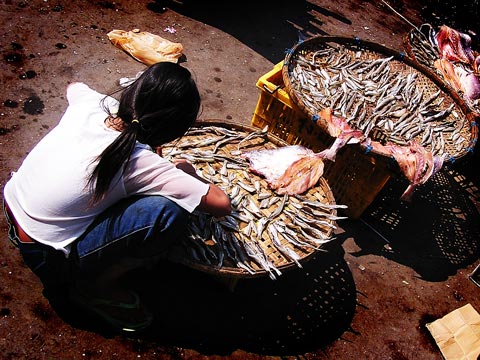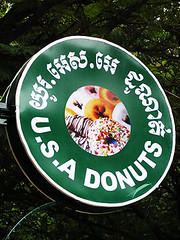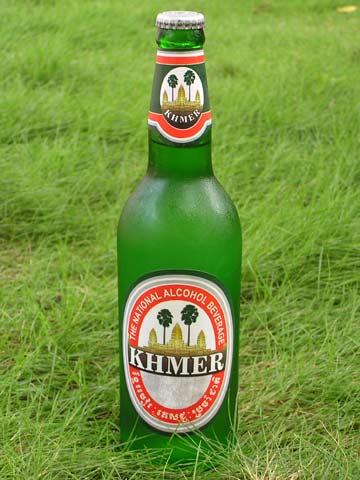Assigned its Soviet moniker due to its proclivity for stocking Moscow’s goods during the Cold War, all manner of pirated wares and locally made trinkets now replace Communist comestibles at this crowded, ramshackle bazaar. Instead of being housed in a single building, the Russian Market has mostly grown by a process of agglomeration whereby individual store holders piece together their patch of real estate with sheets of corrugated iron, cut-rate cement, and hubris. The result is mayhem but there is some semblance of organisation thanks to the Khmer tradition of grouping like businesses together.
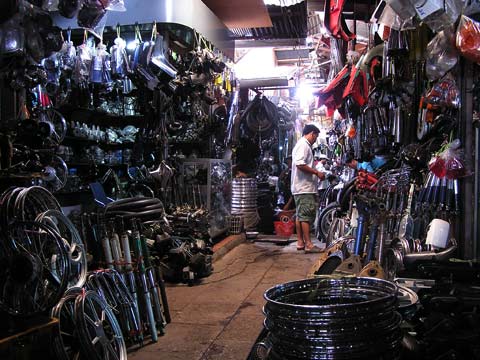
The northeast corner is full of Daelim and Honda motorcycle parts and tools, the northern outside edge is fruit (both imported and local), and the northern central section contains meat, veggies and dried foods. There is a band of small fast food vendors through the centre on the western side. Slender alleys of pirated clothes and shoes are on the eastern side and run all the way to the southern end, with a centre section full of cheap tailors. The southernmost edge is pirated DVDs/CDs, software, and tourist t-shirts. The southwest corner is carved paraphernalia and stoneware. Nestled amongst these spontaneous provinces, you’ll also find practically everything else that you’ll want to ship home from Cambodia: crockery, lamps, handbags, silks, jewelry, photocopied books, Buddhist kitsch at prices lower than practically everywhere in Asia.
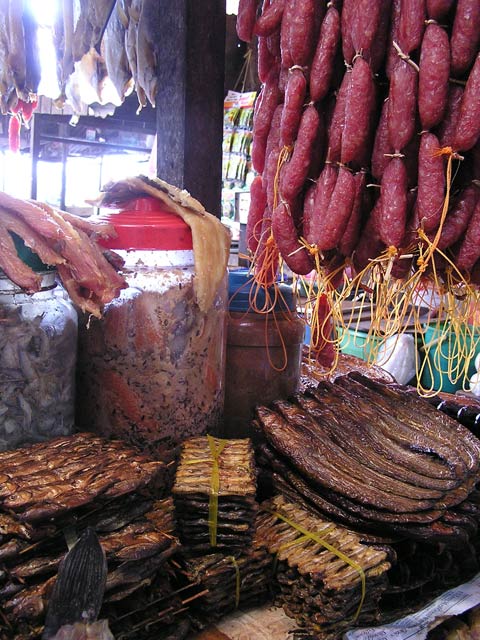
As a food destination and much like the above photo, Russian Market is a mixed bag. Thanks to the low zinc-coated ceiling, the dull oppressive heat is your inescapable shopping companion and due to this, the standard of fresh fruit and vegetables is passable if you arrive in the morning and slowly degrades as the day progresses.
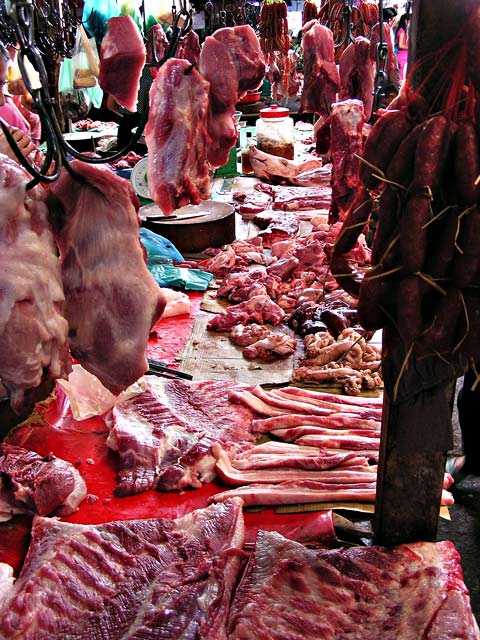
This little piggy went to market.
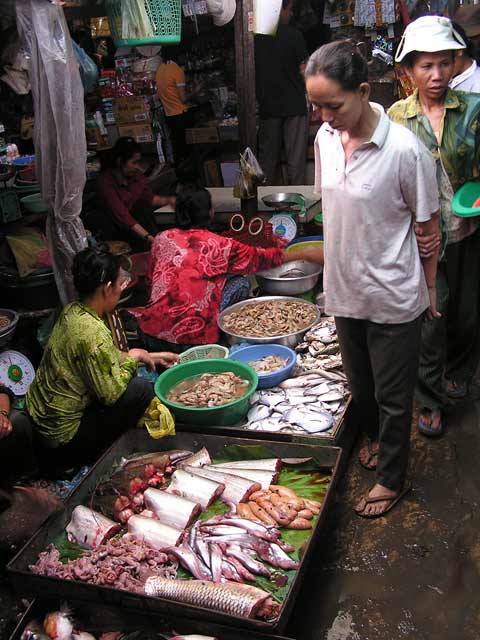
For fresh meat and seafood, the produce is generally not of the same quality as the larger Central Market and very little of it is kept on ice. You’ll occasionally be able to cut a good deal for prawns (bawngkia) on ice, live langoustine (bawngkang) or mudcrabs (kdaam) simply because the demand isn’t as high at the Russian Market as it is elsewhere.
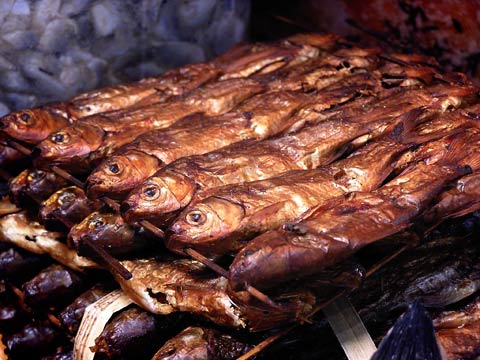
If you’re easily overwhelmed by the smell of fermented and dried aquatic life, then this is not the place for you.
The central group of fast food stalls seems to be the only area where there is a common roof, now stained jet black from years of cooking oil smoke and charcoal fire. By Western standards of hygiene, it looks unreservedly grim, especially as the decaying cooking detritus builds to an olfactory crescendo of putrefaction shortly after lunch. There are a handful of great Khmer meals to be had here that are hard to find in Phnom Penh’s restaurants, a few of which I’ve only ever seen cooked on a mobile cart. One of these is the Khmer version of the Vietnamese pancake, Banh Xeo.
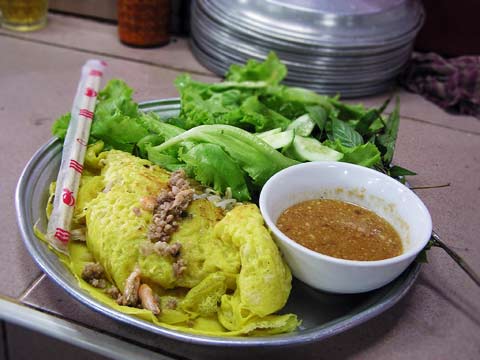
This banh xeo (2500 riel, US$0.62) was at least a foot long and had enough lettuce, fishwort (chee poel trei) and Vietnamese coriander (chee krassang) to sustain a large warren of rabbits. The egg and rice flour crepe had an almost perfectly crispy, wok-tainted skin and was packed solid with cooked ground pork, whole small-ish prawns and bean shoots. While I had a tough time eating the whole thing, a tiny Khmer woman seated next to me managed to inhale two in quick succession, in a trick akin to stuffing twenty clowns into a comedy Volkswagen. I wanted to ask her if there was anything up her sleeves, but my Khmer just doesn’t stretch that far.
Location:The Russian Market, Cnr St. 155 and St.444, Phnom Penh
